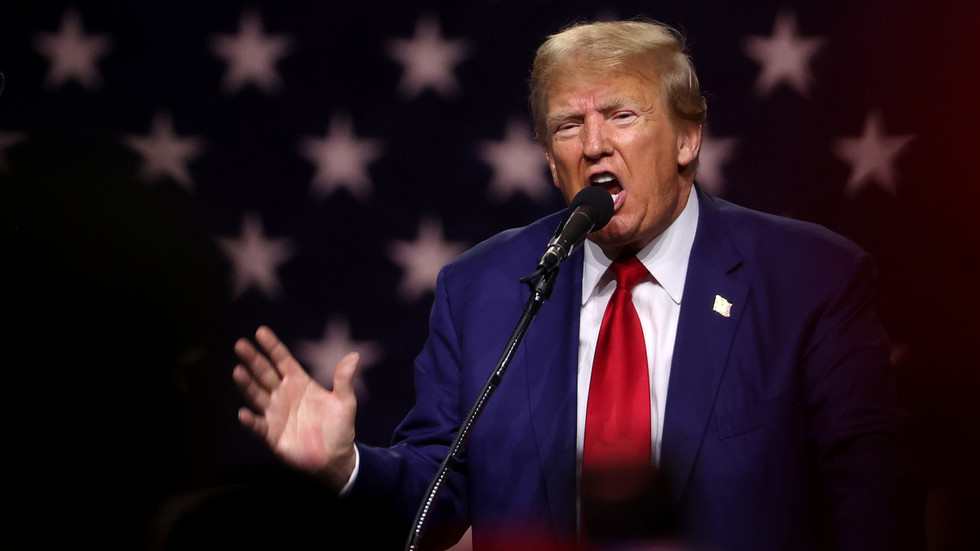
After months of turmoil since U.S. President Donald Trump reignited his trade war with China upon his return to the White House, representatives from the world’s two biggest economies will meet on Monday in London to try to resolve their differences and bring some calm to global markets and supply chains.
“The meeting should go very well,” Trump posted on Truth Social last week, when he announced the trade talks after a much-anticipated direct call with Chinese President Xi Jinping.
[time-brightcove not-tgx=”true”]While it’s not yet clear where things could go next, it may be valuable to look back on how we got here.
Through tariffs and counter-tariffs, dealmaking and dealbreaking, here’s a timeline of the U.S. and China’s tumultuous trade relations since the start of Trump’s second term.
February 1
Trump signed an executive order increasing tariffs on imported goods from China by 10%, to take effect on Feb. 4. The order aimed to curb the import of fentanyl into the country. Tariffs of 25% were imposed on Canada and Mexico for similar reasons.
The order also ended the de minimis exemption for Chinese goods, whereby small items valued at $800 or less and shipped directly to U.S. consumers were exempted from customs declarations and duties. The Trump Administration argued that the rule contributed to the entry of fentanyl and illegal drugs into the U.S.
February 4
China’s Ministry of Finance announced it would impose, effective Feb. 10, a 15% tariff on coal and liquefied natural gas as well as a 10% tariff on crude oil, agricultural machinery, large-displacement cars, and pickup trucks.
The same day, China’s Commerce Ministry announced export controls on a number of rare-earth minerals, including bismuth, indium, molybdenum, tungsten, and tellurium items that can be used in various industries like electronics or munitions manufacturing, saying there was a need “to safeguard national security and interests and fulfill international obligations such as non-proliferation.”
February 5
In an amendment to his previous order, Trump said that eligible packages will have de minimis exemptions until “adequate systems are in place to fully and expediently process and collect tariff revenue.”
February 10
Trump issued a proclamation announcing ad valorem tariffs on steel imports. Aluminum imports are also increased from 10% to 25%. In the proclamation, Trump said exports of steel from China have increased, “displacing production in other countries and forcing them to export greater volumes of steel articles and derivative steel articles to the United States.”
February 27
Trump signed a memorandum directing the Committee on Foreign Investment in the United States (CFIUS) to restrict investors with links to China from investing in U.S. technology, critical infrastructure, healthcare, agriculture, energy, raw materials, and other strategic sectors.
March 3
Trump raised tariffs on Chinese goods to 20%.
March 4
China’s Ministry of Finance responded with a 15% tariff on chicken, wheat, corn and cotton, and a 10% tariff on sorghum, soybeans, pork, beef, aquatic products, fruits, vegetables, and dairy products.
China’s Ministry of Commerce also sued the U.S. over the March 3 tariffs through the World Trade Organization’s dispute settlement mechanism.
Read More: Viewing Trump’s Trade War From the World’s Shopping Mall in China
April 2
Trump unveiled his “Liberation Day” universal tariffs, which included an additional 34% tariff on Chinese goods on top of the existing 20% tariff rate, bringing the total tariff on Chinese goods to 54%.
He also signed an executive order once again ending the de minimis exemption for packages from mainland China and Hong Kong, saying the previously absent “adequate systems” to process and collect tariff revenue for affected parcels were “now in place.”
April 4
China’s Ministry of Finance retaliated with a 34% tariff on all imports from the U.S, starting April 10.
On the same day, China’s Ministry of Commerce announced that it would require companies to apply for a license before exporting seven types of rare earths: samarium, gadolinium, terbium, dysprosium, lutetium, scandium and yttrium.
Read More: Why China Laughs at the Idea of Americans Taking Their Manufacturing Jobs
April 8
Following up on an earlier threat to escalate tit-for-tat tariffs, Trump issued an executive order effectively raising the tariffs on imported goods from China to 104%.
April 9
China again hiked its tariffs on U.S. imports from 34% to 84%.
Hours later, Trump responded to China’s latest hike on Truth Social, saying: “Based on the lack of respect that China has shown to the World’s Markets, I am hereby raising the Tariff charged to China by the United States of America to 125%, effective immediately.” This brought the total tariff rate on China’s exports to the U.S. to 145%.
In the same post, Trump also announced a 90-day reduction of his universal tariffs on other countries to 10%.
Read More: ‘Nothing Is Certain but Uncertainty’: How the World Is Reacting to Trump’s Tariff Reversal
April 11
China’s Ministry of Finance adjusted its tariff rate against U.S. exports to 125% but said: “If the U.S. continues to impose tariffs on Chinese goods exported to the U.S., China will ignore it.”
Trump, in an executive order, said the U.S. was removing reciprocal tariffs on a range of electronics products and parts, including from China. Electronics from China, however, remained subject to the 20% tariff on Chinese goods.
May 12
Chinese and U.S. officials, in a meeting in Geneva, came to an agreement to temporarily reduce reciprocal tariffs by 115% starting May 14. The effective tariff rate on Chinese imports was reduced to 30%, while the Chinese tariff rate on American goods was reduced to 10%. The deal also included a 90-day pause on other trade barriers and another amendment to the de minimis rules for low-value shipments from China.
Read More: How Trump’s Tariff Unpredictability Hurts Businesses and Consumers—and Could Help China
May 29
The U.S. Court of International Trade in New York ruled that Trump did not have the authority to impose sweeping tariffs, including some imposed on China. The Trump Administration swiftly appealed the ruling.
May 30
Trump accused China of reneging on the deal made in Geneva, posting on Truth Social: “I made a FAST DEAL with China in order to save them from what I thought was going to be a very bad situation, and I didn’t want to see that happen. Because of this deal, everything quickly stabilized and China got back to business as usual. Everybody was happy! That is the good news!!! The bad news is that China, perhaps not surprisingly to some, HAS TOTALLY VIOLATED ITS AGREEMENT WITH US. So much for being Mr. NICE GUY!”
Trump Administration officials would later reveal that China did not ease its restrictions on rare earth exports as was supposedly a part of the deal.
Read More: How Rare Earths Are Playing a Pivotal Role in the U.S.-China Trade War
June 2
China’s Ministry of Commerce reacted to accusations that it went back on its word. “After the Geneva economic and trade talks, the United States has successively introduced a number of discriminatory restrictive measures against China, including issuing export control guidelines for AI chips, stopping the sale of chip design software (EDA) to China, and announcing the revocation of Chinese student visas,” a spokesperson said. “These practices seriously violate the consensus reached by the two heads of state on January 17, seriously undermine the existing consensus of the Geneva economic and trade talks, and seriously damage China’s legitimate rights and interests.”
June 5
Trump and Xi held their first phone call in months. According to Trump, the call lasted for around 90 minutes, where they discussed “some of the intricacies of our recently made, and agreed to, Trade Deal.”
June 6
Trump announced that Treasury Secretary Scott Bessent, Commerce Secretary Howard Lutnick, and United States Trade Representative Jamieson Greer will represent the U.S. in trade talks in London on June 9.

 1 month ago
9
1 month ago
9









